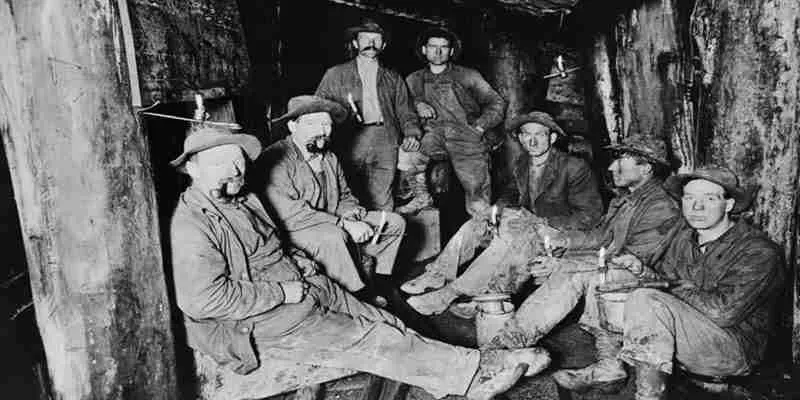Do you have an old coal miner in your family tree?
If your family came from the central belt of Scotland, the answer might be yes. Coal mining was a major industry in Scotland, particularly from the 16th century onward. The industry reached its peak during the Industrial Revolution when Scotland became a significant producer of coal. This resource was essential for powering factories, ships, and railways, which fuelled industrial growth. Many Scots worked as coal miners, colliers, or hewers who all extracted coal. Therefore it is possible that you may find one of these occupations in your family tree.
The old coal mines were often located near industrial towns and ports. For example, Glasgow became a major coal exporting port, sending coal to other parts of Britain and abroad. Fife, Ayrshire and Clackmannanshire also had coal shipping routes through coastal ports.
Old coal mines before the 18th century
Early coal mining in Scotland was mostly small-scale for local use. The harsh conditions of coal mining meant that miners had shorter life expectancies compared to other labourers. Many suffered from injuries or lung diseases such as “black lung” from inhaling coal dust.
Many miners were bound in a system of bondage that resembled serfdom until the late 18th century. This form of servitude was legally established by the Scottish Parliament who passed an act in 1606. The act stated that “no person should fee, hire or conduce any salters, colliers or coal bearers without a written authority from the master whom they had last served“.
This form of servitude reflects the harsh nature of life at the time. In addition, newspapers documented names of colliers who had escaped.
Why? to prevent them from working elsewhere. When I was researching the Paterson family from Sauchie, I found such an instance in 1777 when many colliers deserted the coal works.
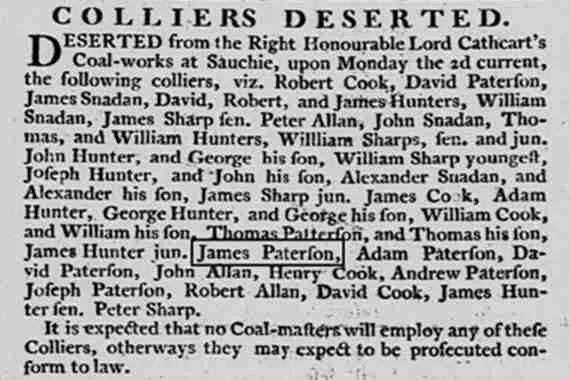
Although the process of liberation began in 1775 when Parliament passed an act (Colliers and Salters (Scotland) Act of 1775), many remained bound until 1799. Parliament had put in place the Colliers (Scotland) Act of 1799 and 1800 declaring all colliers in Scotland “to be free from their servitude.“
Over time, advancements in mining technology led to the gradual mechanisation of coal mining.
An old coal miner in the 1800s
The demand for coal surged during the Industrial Revolution as it became a primary source of fuel for steam engines and heating. This was the period of the greatest growth, with large mining communities developing. However it came at a significant cost to the miners and their families.
Children and women continued to work alongside men in the mines. In 1842, a law was passed banning women and children under ten from working underground after a government report exposed their horrific conditions. Although it was a step forward, it did little to improve overall conditions for the men who continued to face harsh and dangerous work environments.
They typically worked 12-14 hours a day in cramped, dark conditions. Living in “miners’ rows”, these were usually small cottages with minimal sanitation.
Your old coal miner would have earned low wages and pay cuts were frequent. Although they tried to strike for better conditions, these were often unsuccessful because the owners had substantial control over their labour force.
Despite the hardships, mining communities were tight-knit. In fact, they shared a strong sense of identity and culture. The second half of the 19th century saw an increase in mining unions. For example, the Scottish Miners’ Federation (founded in 1894) was established to fight for better wages and safer conditions.
Where to find your coal miner in records
There is a website that focuses on the history of Scottish mining:
You will find records relating to coal companies at University Archives:
- For example, the Glasgow University archives has the records for coal company William Dixon Ltd from Govan, Glasgow
To uncover more about your coal-mining ancestors, contact the local archive in the region where they lived and worked. You may discover valuable records related to old coal mines. For example:
- Stirlingshire Archives Services has records on the Stirlingshire Miners‘ Association, Bannockburn Branch.
Additionally, the National Library of Scotland holds extensive collections on Scotland’s coal-mining history, so reaching out to them can also be fruitful.
You never know what fascinating details might emerge!
Thank you for joining me on an another historical journey into an old occupation.
Please remember to leave a comment below and if you want me to write about an old occupation, then let me know.
Good luck with your Scottish family tree.
Until my next post, haste ye back.
Enjoyed this post?
Keep up-to-date with my latest posts and tips below:
We hate SPAM & promise to keep your details safe.
You may also like...
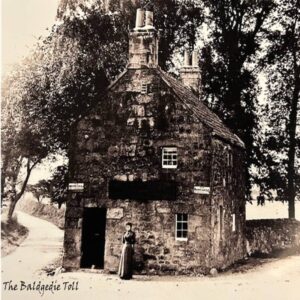
The Life of a Tollkeeper
A tollkeeper was a person who collected road fees from travellers. This old occupation was prominent during the 18th and 19th centuries.
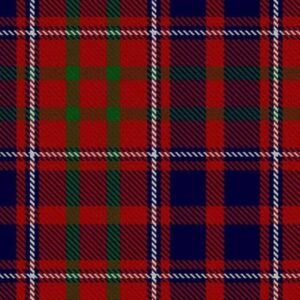
Cameron Surname: Origin, Meaning & History
The Cameron surname has Gaelic origins and it is associated with Clan Cameron, one of the most influential Highland clans.
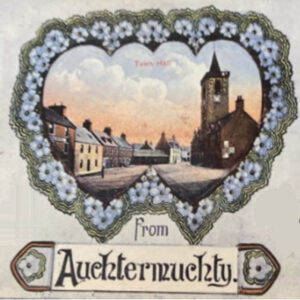
Ancestral Visit to Auchtermuchty, Fife
Auchtermuchty in Fife is known as Muchty to locals. What does Stratheden Whisky, Jimmy Shand and the Proclaimers have in common?
